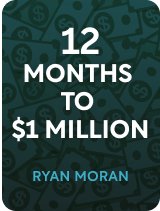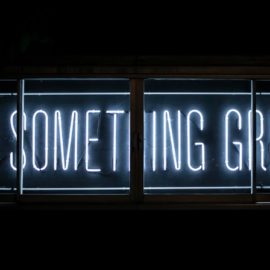

This article is an excerpt from the Shortform book guide to "12 Months to $1 Million" by Ryan Daniel Moran. Shortform has the world's best summaries and analyses of books you should be reading.
Like this article? Sign up for a free trial here.
Why is customer-centric product development important for business? How can you implement a customer-centric strategy in your business plan?
According to 12 Months to $1 Million by Ryan Moran, you must create a brand by having a coherent line of products that all serve the same customer. With this in mind, Moran suggests putting the customer first when creating your first product.
Let’s dive into the details of customer-centric product development.
Choose a Product by Thinking About Your Audience
Moran provides several tips for customer-centric product development:
1. Identify your audience. To do this, Moran suggests you start by thinking about what communities you belong to or are familiar with. For example, if you enjoy hiking with your dog, you might focus on dog owners who enjoy doing outdoor activities with their dogs.
(Shortform note: In Crossing the Chasm, Geoffrey Moore suggests creating imaginary customer profiles to get a better sense of who your audience is. These profiles should be detailed descriptions of people who would purchase your product. To create one, think about characteristics like age, gender, race, occupation, and interests that your potential customers might have. Moore recommends you further consider all possible ways they might encounter and use your product. By doing this, you ensure that your product targets a specific person rather than a vague general populace.)
2. Find out what’s on their shopping list. Once you’ve decided who your audience is, list three to five products they typically buy. This can give you ideas for the product you want to create. You can find out what your audience typically buys by researching online shopping platforms, forums, and so on. For example, you might discover that outdoorsy dog owners buy GPS collars, leashes, bowls, and so on.
(Shortform note: As you identify what products your audience typically buys, think also about what motivates them to buy those products. In The Personal MBA, Josh Kaufman argues that people make purchases to satisfy five basic needs: to feel good about themselves, to connect with others, to grow and learn, to feel safe, and to avoid effort. Considering these five needs when creating a product can ensure that people find it innately valuable.)
3. Decide what your first product will be. Select a product from your list that your audience typically purchases first—the first step to achieving their goals. Your first product should hook customers and make them interested in buying other products from you in the future. For example, you could decide to focus on GPS dog collars.
(Shortform note: If you’re uncertain about what first product will hook your audience, consider looking at the best-selling products from other businesses. In Ready, Fire, Aim, Michael Masterson writes that working off of an existing best-seller can lead to a promising new product.)
4. Research audience opinions. Once you’ve settled on your first product, research what opinions your audience has on similar products. What do they like, dislike, or wish was different about these products? Their opinions can clue you in as to what current products on the market aren’t offering that you can consider offering with your product. For example, you might discover complaints about GPS dog collars being faulty and too bulky.
(Shortform note: One way to research how your audience feels about similar products is to directly ask them. In The $100 Startup, Chris Guillebeau suggests you do this by creating surveys or interviewing people in your target audience. Ask questions like “What makes this a struggle?” or “What’s your biggest concern about this?” These questions can give you a clearer understanding of flaws that exist among current products in your market.)
5. Find a solution with your product. Once you’ve researched problems about similar products, use that information to come up with a product that addresses one of these problems for your specific audience. Moran writes that your product doesn’t need to be dramatically different from other products, it just needs to be tailored to your customer. For example, you might plan to create a collar with reliable GPS technology that’s slim and weatherproof.
(Shortform note: Apart from creating a product that has a solution to the problems you’ve researched, you should also consider ways to make your product stand out from other products. In Positioning, Al Ries and Jack Trout suggest you change the product size (such as providing a miniature version), offer premium or economy prices, target a different demographic, or improve your customer’s purchasing experience.)
6. Plan the other products in your line. Moran writes that your other products shouldn’t be add-ons, accessories, or variations of your first product, but new products that help them achieve the same goal your first product achieved. This ensures you’re creating a brand that will have long-term customers interested in buying more from you down the line. For example, other products that help your customer enjoy the outdoors with their dogs might be a cooling vest, a backpack, and a collapsible dog bowl.
(Shortform note: To come up with other products, the authors of Blue Ocean Strategy suggest you think about what customers do before, during, and after they use your first product. They explain that people often use products in conjunction with other products. For example, people who use a GPS collar for their dog while hiking will want to keep their dog hydrated. They’ll also need to carry supplies and tend to any injuries afterward. Therefore, you could offer a dog bowl, backpack, and first aid kit.)

———End of Preview———
Like what you just read? Read the rest of the world's best book summary and analysis of Ryan Daniel Moran's "12 Months to $1 Million" at Shortform.
Here's what you'll find in our full 12 Months to $1 Million summary:
- Why it's not only possible, but simple, to build a $1 million business in a year
- Proven techniques for creating breakthrough products
- How to decide whether to scale or sell your business






